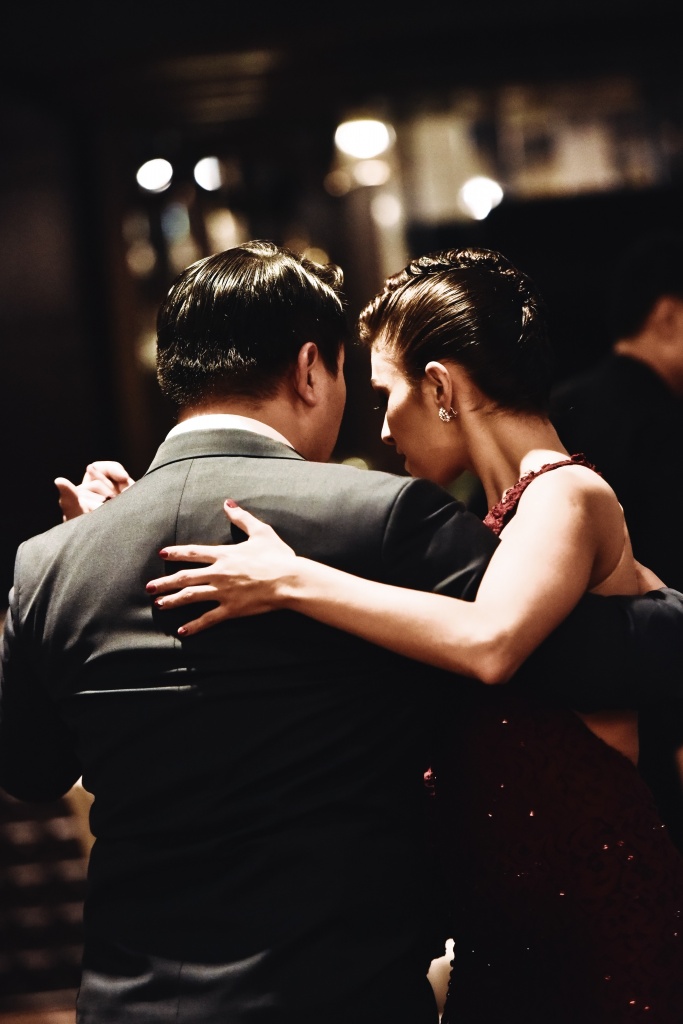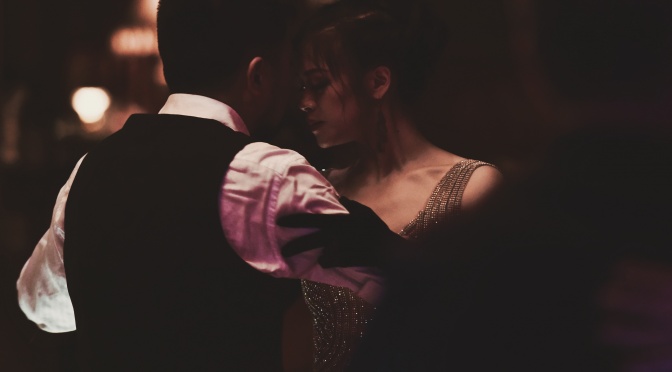Next month it will be 8 years of throwing myself at this thing. Such an enjoyable journey, so many friends met, so many great experiences. Such deep music.
I have travelled many, many times for Tango, pushed myself, studied, studied again and sometimes – in the last year or so – actually danced with some sense of pleasure.
But despite this completely wonderful experience I do feel some disappointment, frustration and ultimately sadness. I want to work to change this.
In many ways I think that what tango is now, how it is presented, how we consume it – is fundamentally flawed.
It is the ultimate elephant in the room – where we all just ignore the presence of so much complete and utter nonsense – perhaps because everyone else does. And because we still want to believe – even though time and time again the real world knocks on our door and tells us that we are mistaken.

Trying to work this out I just want to think of some of the fundamental parts of the tango world, as I have experienced them, just one at a time.
Lessons
This is an improvised dance but 90% of teachers everywhere prioritise steps with little discussion of the embrace, communication or creativity.
What on earth is the point of this? If we do manage to keep learning for more than a few years then we as students have to fight so hard for even more years to escape from the collateral damage these teachers inflicted on us.
Learning patterns so you can pretend you can get through an improvised dance when a clueless person is watching has nothing to do with the beauty of feeling Tango. Yet that is what we so often get.
Milongas
So many possibilities – yet the reality for most people is an immensely unoptimised experience. Dire music, miserable environments, beautiful women who have made such an effort sitting on chairs for 90% of the evening praying that there might by a miracle be at least one leader in the room that knows something about the essence, music and beauty of tango.
And that they might possibly ask them – because it is apparently OK that they can’t ask but leaders can.
Festivals
What on earth is the point of these things? A succession of smiling choreographed professionals show us they can memorise lots of impossible things to do very quickly in 12 minutes.
Of course they can, they don’t have anything else to do and they spend months and months trying.
Who cares? Even if they made a mistake we wouldn’t notice because we have no idea what their predetermined sequence that they just forgot was ..
Choreographed performances, speeches and announcements, and through all of this beautiful women who have made such an effort are now sitting on chairs for 3 days on end rather than just 4 hours
Leaders
The gender imbalanced world of Tango means that once men know a few meaningless patterns and are not completely torturing followers they can keep getting dances and just stop learning because they don’t need to learn to meet their own limited ambitions.
Although of course this is understandable it is such a disaster for an intelligent, fascinating, difficult and improvised partner dance. But it is the reality. Especially – I think – in England.
Practise
This one I just don’t get. And I care about it so much. Because I want to practise.
If we love tango – and we want to work at it – because Tango has no valid shortcuts and we want to be better – why on earth doesn’t everyone I meet talk about how to practise, who you are practising with, where to practise – how to work, how to learn. How to sweat, listen, try, create – to make something. How to create something true to themselves.
How to break down any muscle memory of steps until they have completely gone. How to take yourself to where you have never been before. How to creatively exit in 3 different ways from this node. How to get in a zone but stay with the music. How to converse with each other. How to connect and stay connected and never ever lose it.
But they never do. They might talk about lessons, teachers, other dancers, sometimes Milongas and often festivals. They say they want to be so good at something so challenging – yet they don’t prioritise practise. They don’t work together – helping each other.
This I don’t get and I don’t think I ever will. It as if the Tango world pulled a colossal blanket over all of our eyes. It’s like a perfect conspiracy.
The perfect tango conspiracy
1 It is an improvised dance – ignore that just learn these wholly irrelevant steps instead.
2 It is hard – ignore that and don’t practise
3 It is the world’s most beautiful music – full of so many emotions that you can dance to – ignore that and have no understanding what orchestra this is, who the singer is and have no idea what they are saying – that’s just fine.
My Plan
I am going to find people who really do want to work at this thing. Great work, effort filled work. Sweat, frustration and joy – as obstacles of communication are overcome..
Practise – the thing we all should be doing but mostly aren’t. From now on I am going to chase this down – somewhere in the world there has just got to be a group of hard working people who see through the tango myth that surrounds them and want to actually work hard and get better at an improvised dance?
Surely.
No?
I would get on planes to find them. And I suspect that is exactly what I will have to do.


